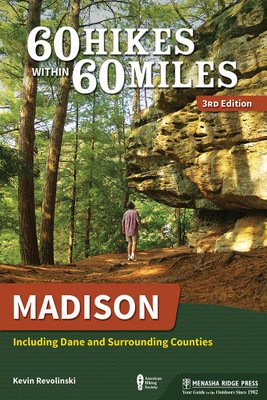Into the Underworld: Exploring the Cenotes of the Yucatan
Water is as precious as blood. So believed the Maya, and when I visited the Yucatán Peninsula in Mexico I understood why. There is no visible fresh water. The land is hot and often dry, and when the rains do come, they quickly disappear into the rocky earth or evaporate again to the skies. And yet a great civilization thrived here, built enormous cities and pyramids, and independently developed agriculture.
None of this would have been possible without a reliable source of drinking water, and even the Maya royalty themselves were required to regularly spill their own blood in religious ceremonies to appease the god Chac and guarantee that the rains would come. But without surface rivers, lakes, or ponds, the rains would mean little. The salvation for the Maya lay beneath and it is no coincidence that their mythology speaks dearly of the underworld. They called it Xibalba (she-BAL-bah) and the vast underground network of caverns, channels, and wells in the peninsula, became the physical representation of a dark world that provided the sustenance for life on the surface.

The Yucatán rests atop limestone bedrock that is peppered with caverns formed thousands of years ago. The seasonal rains have percolated into the earth over millennia and the rainwater’s acidic properties have worn away at the limestone, first creating underground caverns and eventually causing the thin limestone crust above to collapse leaving sinkholes or cenotes (say-NO-tays). The Spanish word cenote comes from dzonot the word for sinkhole in the regional Maya dialect, Yucatec. Cenotes functioned as the primary source of drinking water for the Maya – in fact, even today some small villages still depend on them for water – and for this they took on a sacred importance. Some of the cenotes show evidence of ritual activity and archaeologists have found broken pottery, precious stones and even human bones at the bottom. Chichén Itzá’s Sacred Well is one such place.

Today, adventuresome tourists and explorers alike come to the Yucatán to descend via these sinkholes into a fascinating underground and underwater world. Some cenotes rise to the surface like ponds, others – such as the Sacred Well – drop like deep well shafts below the ground. Still others are covered partially or completely from the world above ground. There are over three thousand cenotes in the Yucatán and many of them have yet to be explored, but there are some that offer travelers an experience they are not likely to forget.
Various tour operators run excursions into the underworld and cavern diving is very popular. Cavern diving means that divers always remain less than 200 feet from surface air and light. This is different from cave diving which requires special training and certification. Daring cave divers have explored underground caverns longer than eight miles, often removing their tanks from their backs and pushing them ahead to get through very tight passages. Obviously this is not an activity for someone on a day trip off the cruise ship and I am not so addicted to adrenaline.

Cavern diving, on the other hand, offers the comfort of a professional guide and a line of sight on the exit. Divers need not be certified in cave diving; a basic open water certificate like my own will do. But it is important that the guide is a certified cave guide and that groups for each guide do not exceed four divers. For those less inclined to go under, snorkeling is a good option and still allows the participant to see the remarkable formations up close.
Choosing a reputable operator was my primary concern. After a careful internet search, I booked an excursion with Hidden Worlds, located just off the highway south of Playa del Carmen. A group of four divers, we gathered our rental equipment and climbed aboard a truck that was little more than an engine attached to a chassis, and rode through the jungle to Bat Cave. There, we descended a ladder down a narrow shaft into a cavern with a wooden platform in the middle. This area is lighted and we took a look around as our tanks and equipment were lowered to the platform on a chain and pulley. The walls of the cavern looked like icing melting off a cake and large columns and stalactites descended from above. Through the clear waters the rising stalagmite counterparts were visible. After a thorough briefing by the divemaster on safety rules and procedures, we donned our gear and slipped into the chilly water.
The presence of stalactites and stalagmites – which form in the open air of a cave when mineral rich water drips and evaporates repeatedly in the same place – indicated that at one time this cave was not flooded. Over 15,000 years ago during the last Ice Age, sea levels were much lower, and consequently the mainland waters that flowed to them. So these mineral spikes and columns were able to form in what was then just open air. Signs of times even further back are also present – fossils from when this area was still part of the sea are visible frozen in limestone.

On the first dive, we followed the divemaster on a loop that left the main chamber and entered narrower passages – but none so narrow that two divers could not pass at once – eventually re-emerging near the platform where we started. A line of twine traces the path from stalagmite to stalactite so if something were to happen to the guide – heaven forbid – finding our way back out would not be difficult at all, and according to the rules of safe cavern diving, we were never far from the surface.
A magical world opened up before me and we moved at a very leisurely pace, giving each of us time to explore the colorful formations with our powerful dive lights. Bubbles rose into crevices above becoming reflective surfaces that undulated like funhouse mirrors. Saltwater sometimes finds its way into cenotes near the sea and it sits at the bottom of some caverns creating colors when stirred.
Our second dive passed through Dos Ojos, a cavern partially open to sunlight. As we came around a bend in the passage and began our return to the world above, we turned off our lights and the surface became a shimmering blue at the end of the tunnel. So this is the view from Xibalba, I thought.
_____________________________
This sort of day trip is perfect for those days when the weather is lousy. For more information about Hidden Worlds Diving, check out their website.
This is not far from Cancun and even closer to Playa del Carmen. The ferry over from Cozumel also makes for an easy day trip. I stayed in Playa because sometimes the over-touristed Cancun gets on my nerves. Playa, however, has grown much since I first saw it as a sleepy seaside town in 1994. Hotels range from the all-inclusives along the coast to small no-frills operations catering to budget travelers.
Flights would be into Cancun. Check back and check often at our Travel Portal, because Cancun flight and hotel deals are frequent!




 ORDER YOUR COPY TODAY!
ORDER YOUR COPY TODAY! ORDER YOUR COPY TODAY!
ORDER YOUR COPY TODAY!